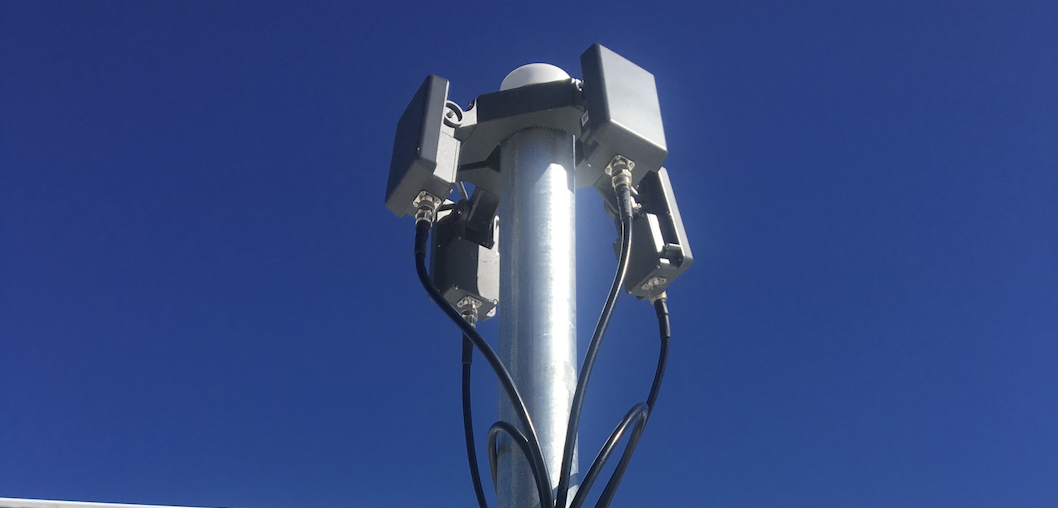How do these drone detection sensors work?
The AirGuard platform integrates data from multiple sensor technologies that are layered together to provide complete airspace protection. Each sensor type targets different kinds of drone threats.
- Remote ID Sensor: This sensor detects the legally mandated "digital license plate" broadcast from compliant drones. It listens for these public, one-way signals on common frequencies like Bluetooth and Wi-Fi (2.4 GHz and 5.8 GHz). By decoding these broadcasts, the sensor can identify the drone and its operator's live location without needing to intercept any private communication links. It is the foundational layer for regulatory compliance and basic airspace awareness.
- RF Sensor: This sensor works by passively listening to a wide spectrum of radio frequencies (433 MHz to 5.8 GHz) for the command-and-control (C2) link between a non-compliant drone and its controller. Once it detects a signal, it references it against a comprehensive library of drone communication signatures to identify the drone's make and model, such as those from DJI, Autel, or Parrot.
- DF (Directional RF) Sensor: This sensor significantly enhances the capability of the standard RF sensor. It uses a sophisticated array of antennas to analyze the incoming signal from a non-compliant drone. By measuring the minute time differences in which the signal arrives at each antenna, it calculates the drone's precise direction, or "Angle of Arrival." This adds a critical layer of directional intelligence, providing an accurate bearing to the detected drone with an accuracy of 3° for hovering drones and 10° for moving ones.
What are the key differences between the sensors?
Understanding the differences is key to building a layered security plan.
Target Drone:
- Remote ID: Detects only FAA-compliant drones that are broadcasting their location.
- RF & DF: Detect popular commercial and hobbyist drones that are not broadcasting Remote ID signals.
Information Provided:
- Remote ID: Provides full flight telemetry, including the drone and pilot's live GPS location, altitude, speed, and a unique serial number.
- RF Sensor: Provides the drone's make and model, confirming its presence in the airspace.
- DF Sensor: Provides the drone's make and model plus a precise directional vector to the drone.
Detection Mechanism:
- Remote ID: Passively receives and decodes a public broadcast signal.
- RF & DF: Listen for private communication links and match their patterns against a signature library.
How far can each sensor detect a drone?
Detection ranges can vary based on drone signal strength and environmental factors.
- Remote ID Sensor: Up to 2 to 3 miles.
- RF Sensor: Up to 3 to 5 miles.
- DF Sensor: Up to 3 to 5 miles.
Do these sensors give 360-degree coverage?
Yes, these sensors are omnidirectional. Unlike radar, they do not emit any signals. They can listen for frequencies in all directions to detect a drone within their range.
Do these sensors cause interference with other sensitive equipment?
No. Since Remote ID, RF, and DF sensors are passive and don’t emit any signals, they don’t interfere with other communication devices or sensitive equipment.
How does the surrounding environment affect the use of RF sensors?
These sensors work best when there is little interference, such as over an open field. Urban settings with many buildings and metal structures can cause RF signals to bounce, which may provide incorrect information or create blind spots. For example, a drone flying between two buildings may not be detected if the signal cannot make its way to the sensor. In such cases, multiple sensors may need to be installed to ensure proper coverage.
Our airspace security experts conduct a thorough walk-through and site survey of your facility to identify blind spots and suggest the ideal places to install sensors for maximum coverage.









